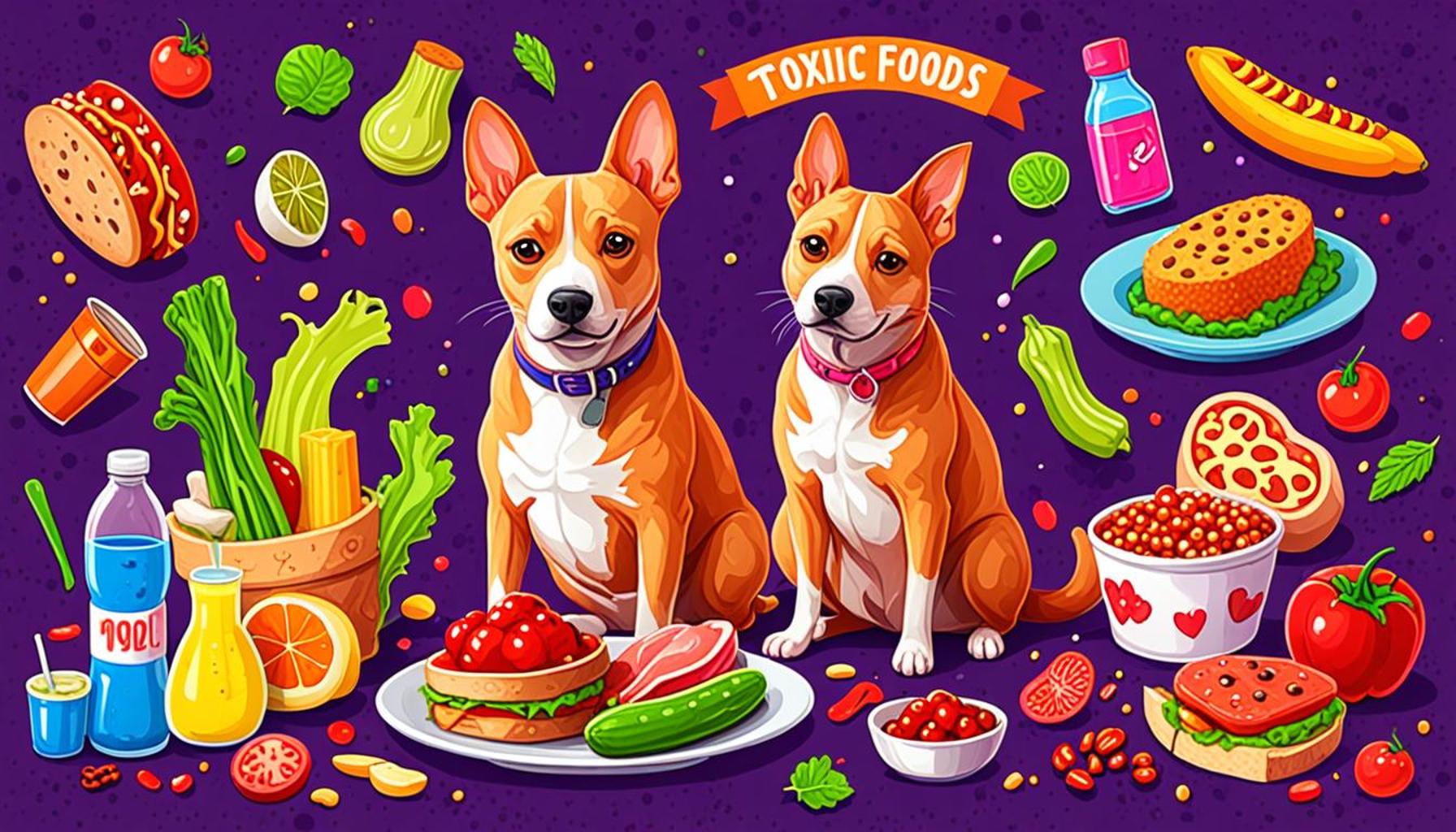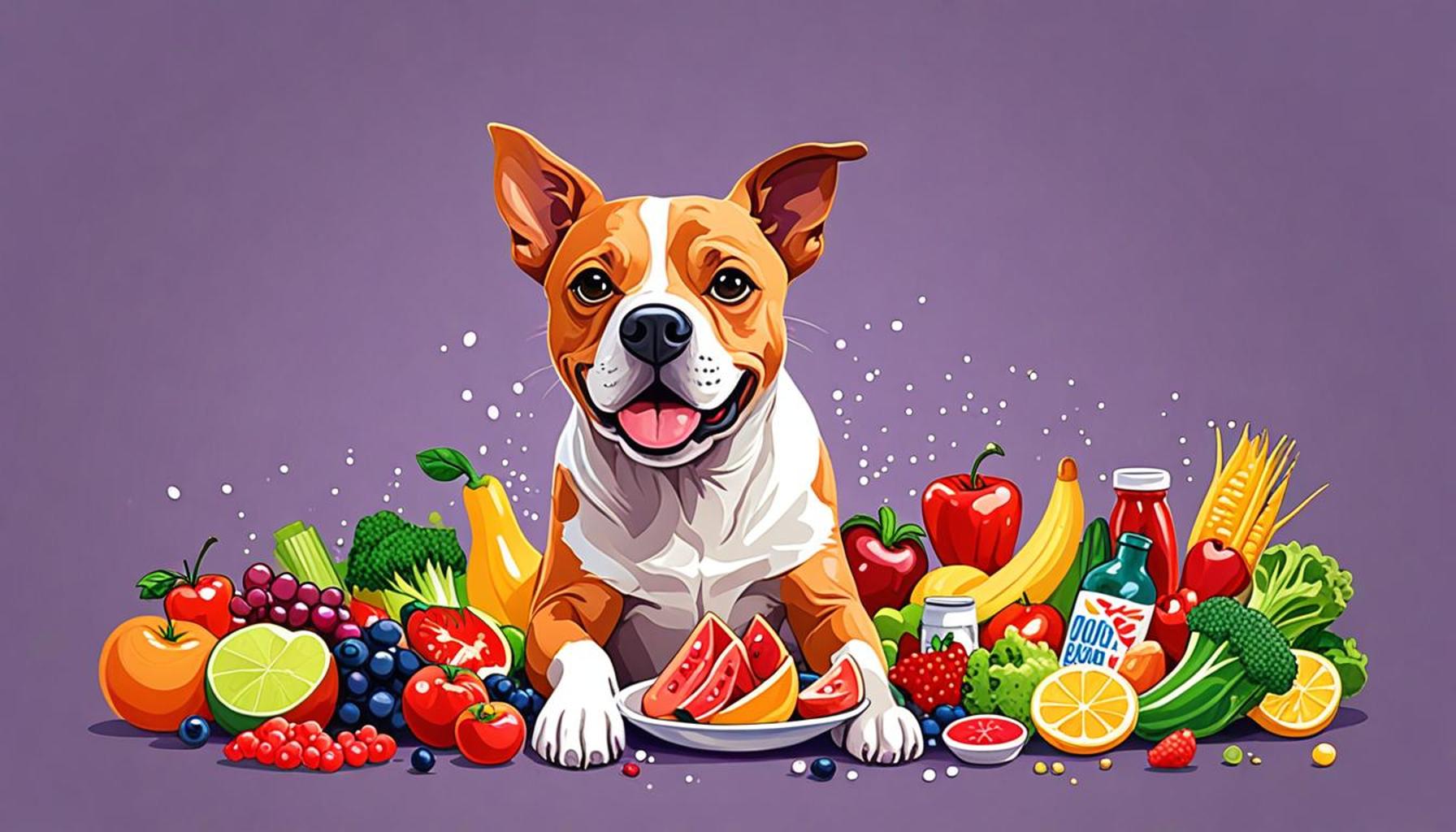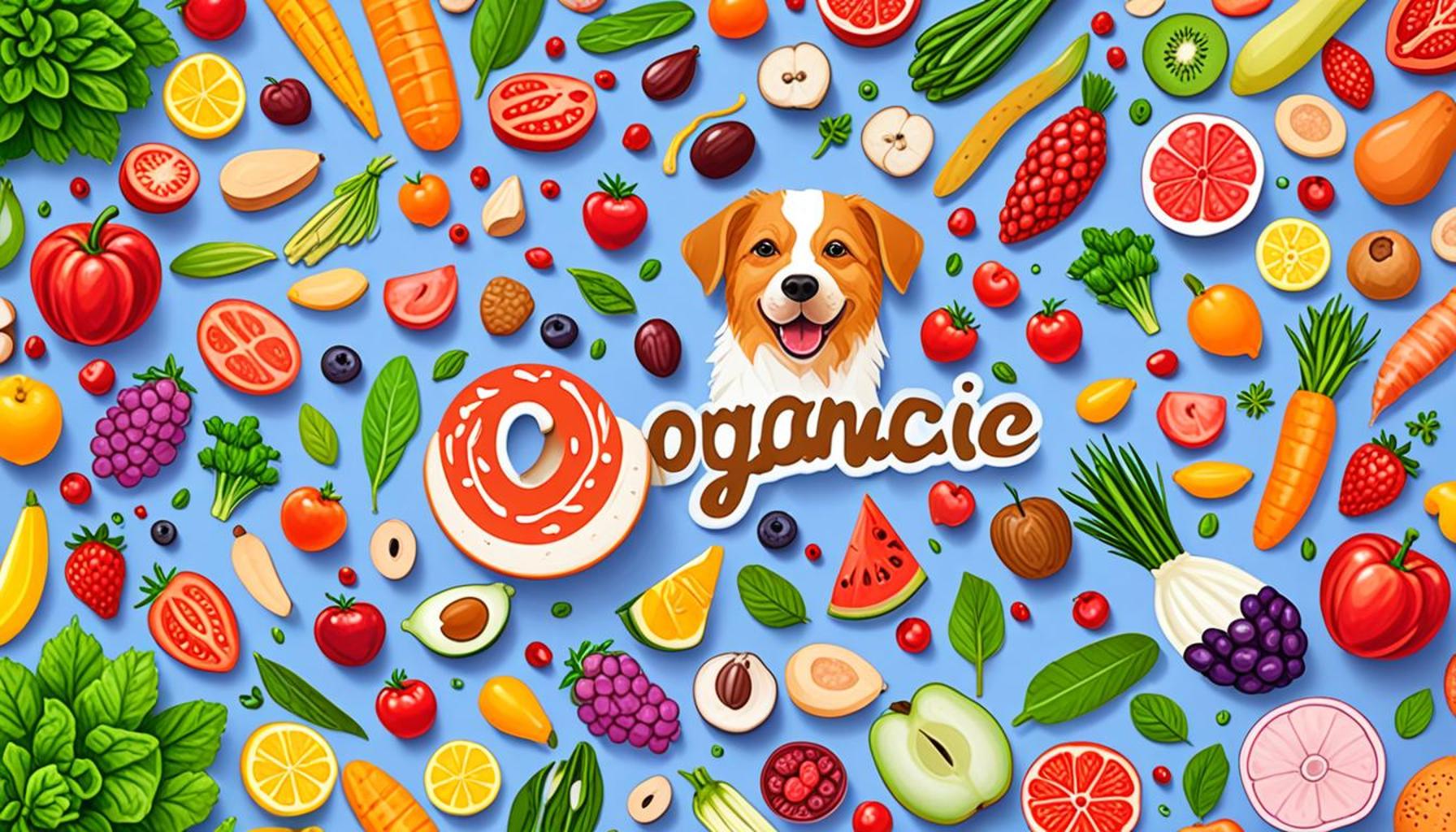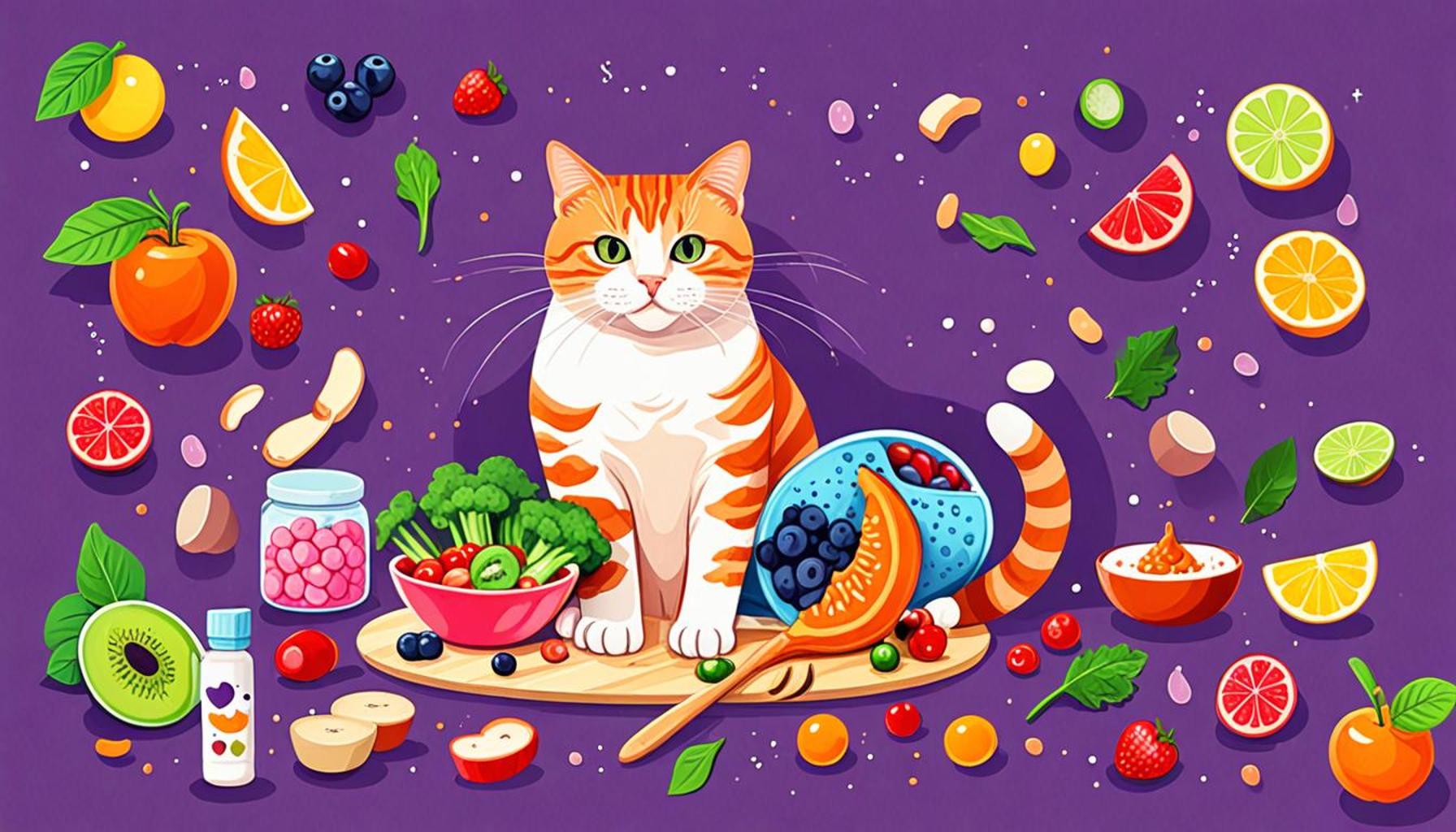Toxic Foods for Pets: What to Avoid in Your Animal’s Diet

Understanding the Risks of Human Food for Pets
Every pet owner wants the best for their furry companions, but what seems like a harmless treat could potentially be harmful. Many human foods are toxic to pets, leading to serious health issues that can often go unnoticed until it’s too late. It’s crucial to understand which items to avoid to keep your animals safe and healthy, as many common household foods can pose a threat.
Common Toxic Foods
- Chocolate: All chocolate contains theobromine, a compound that is highly toxic to dogs and cats. Even small amounts can lead to symptoms like rapid breathing, increased heart rate, and in severe cases, seizures or death. The darker the chocolate, the higher the theobromine concentration, making dark chocolate and baking chocolate particularly dangerous.
- Onions and Garlic: Both of these kitchen staples belong to the allium family and can damage red blood cells, leading to a condition known as hemolytic anemia. Symptoms can take days to manifest and may include weakness, pale gums, and elevated heart rates.
- Grapes and Raisins: Surprisingly, even small amounts of grapes and raisins can cause kidney failure in dogs. The exact compound responsible for this toxicity remains unidentified, making it particularly alarming for pet owners who might unintentionally feed their dogs leftover snacks or lunchbox treats.
- Avocado: While beloved by many humans for its creamy texture and health benefits, avocado contains persin, which can lead to vomiting and diarrhea in pets. Even small quantities can have adverse effects on dogs and cats, especially if they consume the pit or skin.
- Xylitol: A common sugar substitute found in many sugar-free products, including gum, candies, and even some peanut butter, xylitol can lead to a rapid release of insulin in dogs, causing hypoglycemia. Signs include vomiting, loss of coordination, and potentially fatal liver failure if left untreated.
These everyday foods might seem innocuous, but ingesting them can lead to serious health problems that require immediate veterinary attention. Symptoms of poisoning can include vomiting, diarrhea, lethargy, and in severe cases, seizures or even death. Pet owners must stay informed and vigilant about what they’re feeding their companions, treating the pet’s diet similar to how they would approach their own health.
Prevention is Key
By being aware of these toxic foods and actively replacing them with safer alternatives, you can significantly reduce the risk of health issues for your pets. There are many dog and cat-friendly treats available that mimic the flavors they might crave without the dangerous consequences. Always consult your veterinarian for dietary recommendations tailored to your pet’s needs and health conditions. Being proactive and educating yourself on pet nutrition is essential. The first step in protecting your animal’s health begins with knowledge as well as vigilance in your daily choices. Additionally, consider educating family members and friends on what foods to avoid, especially if they are involved in your pet’s care.
In conclusion, as pet owners, keeping our furry friends safe also entails being aware of potential dangers in our kitchens. Regularly reviewing safe pet diets can not only enhance your pet’s quality of life but also prevent avoidable emergencies.
DISCOVER MORE: Click here to learn about the impact of pet ownership on mental health</p
Understanding the Effects of Toxic Foods on Pet Health
Pet owners often think of their four-legged friends as family members, providing them with the best care and nutrition possible. However, many may not fully grasp that some seemingly normal human foods can be incredibly harmful, even deadly, to our pets. The health risks associated with these toxic foods necessitate a closer examination of what we place in our pet’s bowls and how these choices can impact their well-being.
Hidden Dangers in Your Kitchen
It’s important to recognize that many of the foods considered everyday staples for humans can be hazardous for pets. Here are several commonly overlooked items that pet owners should be cautious of:
- Macadamia Nuts: These nuts, while a popular snack for humans, can cause lethargy, vomiting, and tremors in dogs. Even just a few nuts can lead to serious health issues, and although it is not well understood why these nuts are toxic, it is advised to keep them out of reach.
- Alcohol: It might seem surprising, but even a small amount of alcohol can lead to serious consequences for pets. Symptoms such as vomiting, coordination issues, and even respiratory failure can occur. Pets should never be given any alcoholic beverages or exposed to foods that contain alcohol.
- Caffeine: Found not just in coffee but also in tea, energy drinks, and chocolate, caffeine is highly toxic to pets. It can induce restlessness, rapid heart rate, and muscle tremors. In severe cases, caffeine can be fatal, making it essential to avoid leaving caffeinated products unattended.
- Sweet Potatoes, Potatoes, and Tomatoes: While cooked sweet potatoes can be safe for your pets, raw versions of white potatoes and tomatoes belong to the nightshade family and contain solanine—a compound that can be toxic to pets. Symptoms include gastrointestinal issues and lethargy. Always ensure that these vegetables are prepared correctly before sharing them as treats.
- Yeast Dough: This kitchen item might not spring to mind when thinking of toxic foods, but if ingested, it can expand in your pet’s stomach and lead to severe discomfort, bloating, or even rupture of the stomach. It’s best to keep all uncooked dough out of reach.
Understanding that these foods can be toxic is crucial for preventing accidental poisonings. Pet owners should familiarize themselves with the signs of toxicity in pets. Common symptoms may include vomiting, diarrhea, excessive drooling, and lethargy. In any case of suspected poisoning, it is vital to contact a veterinarian immediately, as prompt treatment can make a significant difference in recovery outcomes.
In addition to fostering a safe environment, pet owners should encourage open dialogue about feeding practices among family members, especially children who may be tempted to share food with pets. Educating everyone involved in the pet’s care can help ensure your animal lives a long, healthy life free from the risks associated with toxic foods.
| Toxic Foods | Symptoms and Risks |
|---|---|
| Chocolate | Can lead to vomiting, diarrhea, seizures, and even death due to theobromine. |
| Onions & Garlic | These can damage red blood cells, leading to anemia, lethargy, and gastrointestinal issues. |
| Grapes & Raisins | Causes acute kidney failure, symptoms include vomiting, diarrhea, and lethargy. |
| Xylitol (Artificial Sweetener) | Can cause rapid insulin release, leading to hypoglycemia, seizures, and liver failure. |
Pets are inherently curious, often exploring their environments by tasting everything they find, which can lead them to toxic foods. Understanding what harmful substances are present in everyday foods is crucial for any pet owner. Take chocolate, for instance; it is not just a delightful treat for humans but a deadly threat to dogs due to its theobromine content. On the other hand, onions and garlic, common kitchen staples, can pose a significant risk by damaging your pet’s red blood cells, which may result in anemia.Similarly, grapes and raisins have been linked to sudden kidney failure in some pets. Even a small quantity can have severe repercussions. Pet owners must also be wary of foods containing xylitol, an artificial sweetener found in many sugar-free products, as its ingestion can trigger dramatic drops in blood sugar levels, leading to seizures and liver damage. Staying informed about these toxic foods can significantly increase your pet’s safety and well-being.
DIVE DEEPER: Click here to learn more
Pet-Friendly Alternatives and the Importance of Awareness
While understanding the risks associated with toxic foods for pets is important, it is equally significant to consider safe and healthy alternatives that can enhance your pet’s diet without endangering their health. Providing your pets with appropriate treats and snacks can lead to better nutrition and overall well-being.
Safer Snack Options
Instead of reaching for potentially hazardous human snacks, consider these pet-friendly alternatives:
- Carrots: Crunchy and full of vitamins, carrots can make a great low-calorie snack for dogs and cats. They are also beneficial for dental health as chewing on them can help remove plaque.
- Blueberries: These tiny fruits are packed with antioxidants and are safe for dogs. They can be given as a fresh treat or mixed into homemade pet food for an added nutrient boost.
- Peanut Butter: Serving as a satisfying and protein-rich treat, peanut butter (without xylitol, a harmful sweetener) can keep dogs entertained. It can also be stuffed in toys to engage their mind.
- Pumpkin: Cooked and plain, pumpkin is not only safe but also beneficial for digestive health in pets. Its fiber content can assist with both constipation and diarrhea, offering a nutritional edge to their diet.
- Cooked Chicken: A great source of protein, plain cooked chicken can also serve as a perfect base for homemade pet meals. Be sure to avoid seasoning or bones when preparing this option.
Incorporating these healthy alternatives into your pet’s diet can help mitigate the desire for dangerous human food, promoting better eating habits.
Pet Safety in Shared Spaces
An essential part of pet ownership is maintaining a safe environment. Pet owners should be vigilant about keeping toxic foods well out of reach and educating others about them. Children, in particular, may not fully understand which foods are safe to share and may inadvertently offer something harmful to pets. Teach them to recognize foods that should never be given to animals, fostering a culture of safety and awareness.
Moreover, being aware of hidden ingredients in commercial pet food products is also crucial. Some brands may contain by-products or additives that don’t align with a healthy diet, so it’s wise to read labels carefully, ensuring no harmful ingredients slip through. Researching reputable brands and staying informed about recent product recalls can aid pet owners in making safer short and long-term dietary choices for their furry companions.
Staying updated with current knowledge about toxic foods for pets can empower pet owners to act quickly if an issue arises. Consider keeping emergency contact information for your veterinarian and the nearest animal poison control center readily accessible. This proactive approach can save precious time in critical situations, which could make a significant difference in recovery outcomes.
Understanding what foods to avoid allows for better dietary planning and contributes to a long, healthy life for your pets. Being attentive to nutritional choices, educating oneself and family members, and creating a secure environment not only nurtures your pet’s well-being but also enhances the bond you share with them.
LEARN MORE: Click here for insights on your pet’s diet
Conclusion: Ensuring a Safe and Healthy Diet for Your Pets
In summary, understanding the landscape of toxic foods for pets is a crucial aspect of responsible pet ownership. With common household items like chocolate, grapes, and onions presenting serious health risks, vigilance is key to safeguarding your furry companions. Knowledge of these hazards not only helps in navigating the complexities of a pet’s diet but also fosters a culture of safety within households where pets are present.
By incorporating healthy alternatives into your pet’s diet and steering clear of dangerous foods, you contribute significantly to their overall health and happiness. Options such as carrots, blueberries, and plain cooked chicken can easily replace harmful human snacks while providing essential nutrients. Additionally, understanding hidden ingredients in commercial pet foods further empowers you to make informed choices that benefit your pet’s well-being.
It is essential to educate family members, especially children, about the risks of sharing unsafe foods with pets, creating an environment that prioritizes safety. Finally, being proactive by keeping emergency contacts handy and regularly updating your knowledge on toxic foods for pets can be lifesaving in critical situations.
Ultimately, a committed approach towards pet nutrition not only enhances the health of your beloved animals but also strengthens the bond you share with them. By staying informed and cautious, you ensure that your pets thrive in a safe and enriching environment, living their best lives.



